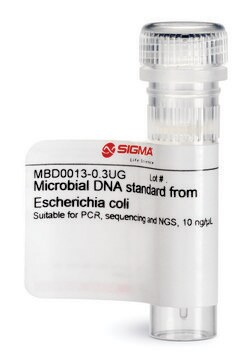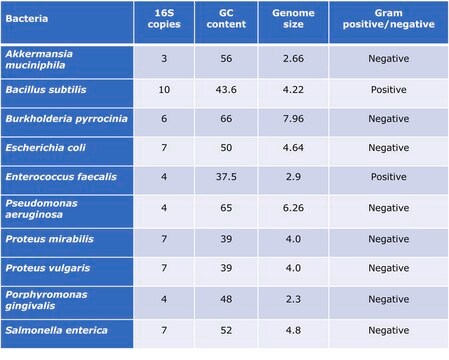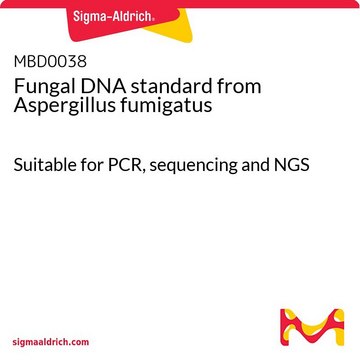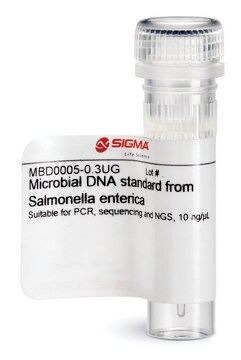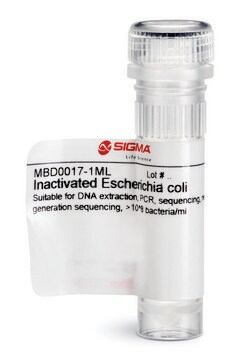おすすめの製品
詳細
Standardization of sample analysis is essential in microbiome genomics research workflow. Lack of standardization can lead to biases and errors in common processes during sample preparation and analysis such as sample amplification, sequencing, and bioinformatics analyses.1 The human microbiome includes not only bacteria, but also viruses and fungi. While the “bacteriome” field has been researched extensively in the past years, fungi including yeasts, comprising the “mycobiome”, remain relatively neglected. Fungi and yeasts have been shown to be involved in illness conditions such as cancer and gastrointestinal disease. The human gut is populated by three fungal phyla, Ascomycota, Basidiomycota, and Zygomycota.
The fungal microbial genomic DNA standard from Candida albicans can serve as standard for benchmarking the performance along the workflow of microbiome research and metagenomic analyses, as well as a tool to increase reproducibility and allow comparison of results obtained by different labs.
Candida albicans is an opportunistic human fungal pathogen belonging to Ascomycota. It exists as a harmless commensal in the gastrointestinal and genitourinary tracts in about 70% of humans and about 75% of women suffer from Candida infection at least once in their lifetime. C. albicans has emerged as a model organism for studying fungal pathogens along with other two fungi: Aspergillus fumigatus and Cryptococcus neoformans.2
Read here how to use our standards to ensure data integrity for your microbiome research.
The fungal microbial genomic DNA standard from Candida albicans can serve as standard for benchmarking the performance along the workflow of microbiome research and metagenomic analyses, as well as a tool to increase reproducibility and allow comparison of results obtained by different labs.
Candida albicans is an opportunistic human fungal pathogen belonging to Ascomycota. It exists as a harmless commensal in the gastrointestinal and genitourinary tracts in about 70% of humans and about 75% of women suffer from Candida infection at least once in their lifetime. C. albicans has emerged as a model organism for studying fungal pathogens along with other two fungi: Aspergillus fumigatus and Cryptococcus neoformans.2
Read here how to use our standards to ensure data integrity for your microbiome research.
アプリケーション
Suitable as a standard for PCR, Sanger and next generation sequencing (NGS).
特徴および利点
- Individual microbial standard for microbiomics and meta-genomics workflow
- Suitable standard for PCR, Sanger sequencing and 18S NGS
- Improves bioinformatics analyses
- Increases reproducibility and repeatability
- Identity and purity of the genomic Candida albicans DNA has been confirmed by 18S NGS and gel electrophoresis
物理的形状
Liquid -The genomic DNA is provided at ≥10 ng/μl concentration in TE buffer pH 8.0
保管分類コード
12 - Non Combustible Liquids
WGK
nwg
適用法令
試験研究用途を考慮した関連法令を主に挙げております。化学物質以外については、一部の情報のみ提供しています。 製品を安全かつ合法的に使用することは、使用者の義務です。最新情報により修正される場合があります。WEBの反映には時間を要することがあるため、適宜SDSをご参照ください。
Jan Code
MBD0044-BULK:
MBD0044-0.3UG:
MBD0044-VAR:
最新バージョンのいずれかを選択してください:
ライフサイエンス、有機合成、材料科学、クロマトグラフィー、分析など、あらゆる分野の研究に経験のあるメンバーがおります。.
製品に関するお問い合わせはこちら(テクニカルサービス)